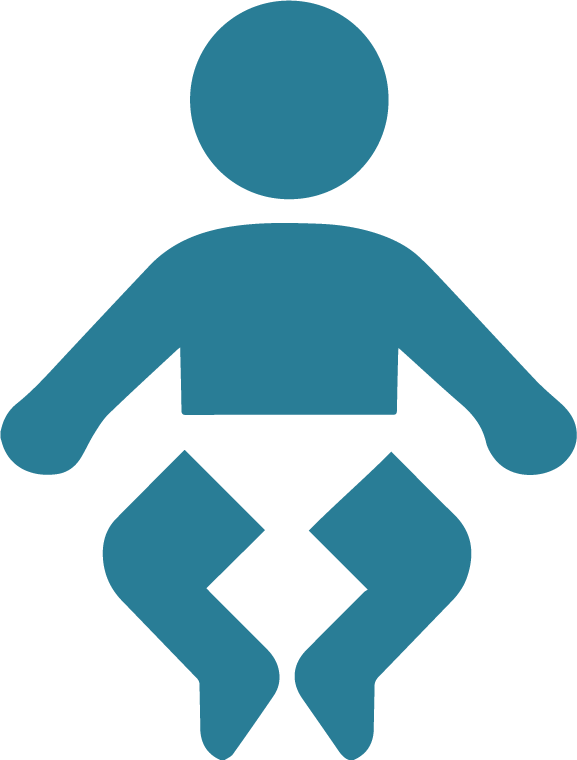Summary
Congenital anomalies encompass a wide range of atypical bodily structures or functions that are present at or before birth. They are a cause of child death and disability, and a major cause of perinatal death – where a baby is stillborn or dies within 28 days of birth. In 2017 and 2018, nearly one-third (31%) of perinatal deaths were caused by a congenital anomaly (AIHW 2021). From 2000–2020, there were around 12,500 deaths in Australia due to a congenital anomaly and half (50%) of these were children aged 0–4 (AIHW 2022).
What congenital anomalies are included?
This report presents information on congenital anomalies in babies born in 2017 that were reported to the National Congenital Anomalies Data Collection. It includes data from 7 jurisdictions – New South Wales, Victoria, Queensland, South Australia, Northern Territory, the Australian Capital Territory and Tasmania – and is based on the most recent data available across them. The report focuses on anomalies that:
- have significant medical, social or cosmetic outcomes for an individual
- were diagnosed in babies up to 12 months of age
- have data available across the 7 reporting jurisdictions.
The numbers and rates presented will underestimate the prevalence of congenital anomalies in Australia (see Technical notes for more information).
Key findings
- Around 3% of babies born in 2017 had a congenital anomaly
Over 8,400 (3%) babies were born with a congenital anomaly in 2017 – around 1 in every 32 babies born. - Circulatory system anomalies were the most common type of anomaly
Circulatory system anomalies (these are anomalies of the heart and major blood vessels) were the most common type of congenital anomaly. These were reported in 33% of babies with any anomaly in 2017. This was followed by musculoskeletal system anomalies (24%) and urinary system anomalies (15%). - Most (90%) babies with an anomaly survived their first year
Most (90%) babies born with a congenital anomaly survived their first year. However, nearly 1 in 10 babies with an anomaly did not live past their first birthday. Around 7% of babies born with an anomaly were stillborn and 3% died in either the neonatal or post-neonatal period. - Rates of congenital anomalies (per 1,000 births) were higher in the following groups
Babies born pre-term (before 37 weeks' gestation)

4x as high in babies born pre-term
Babies born with low birthweight (less than 2,500 grams)

5x as high for low birthweight babies
Women having a multiple birth

3x as high for multiple births


